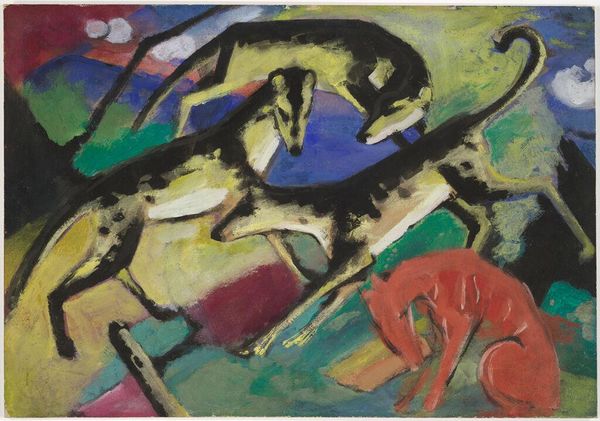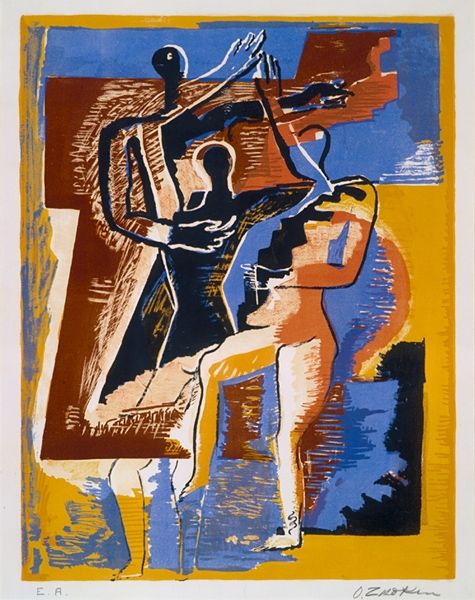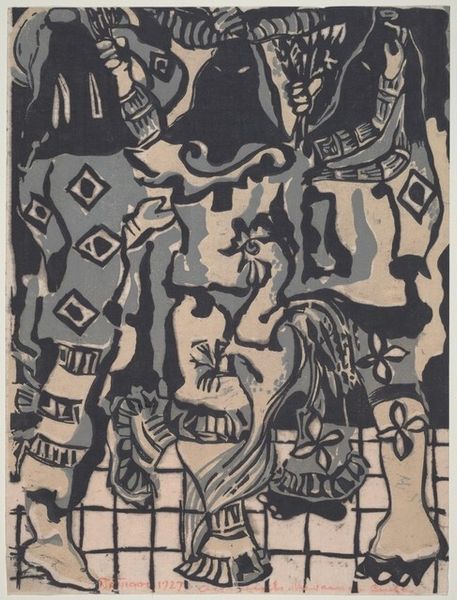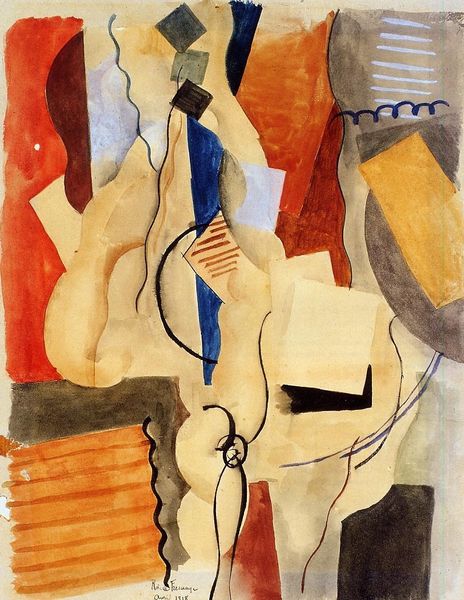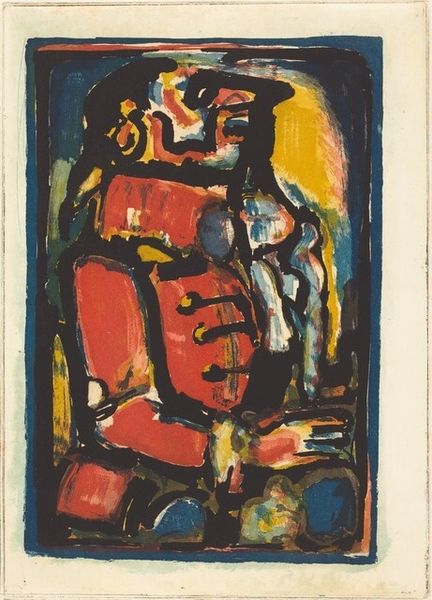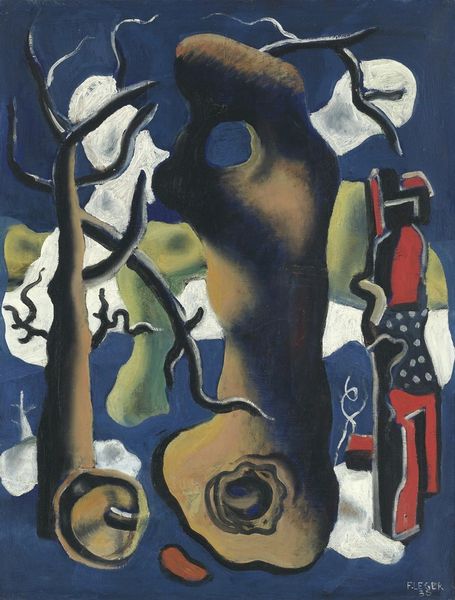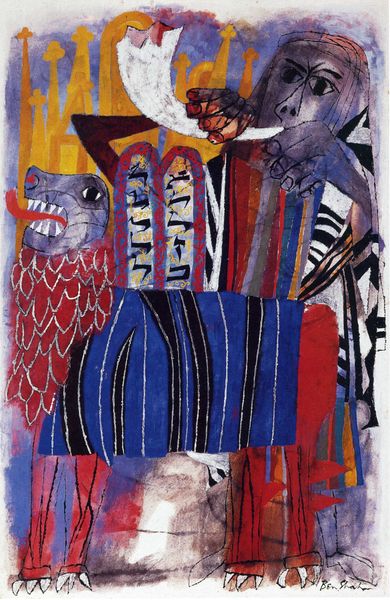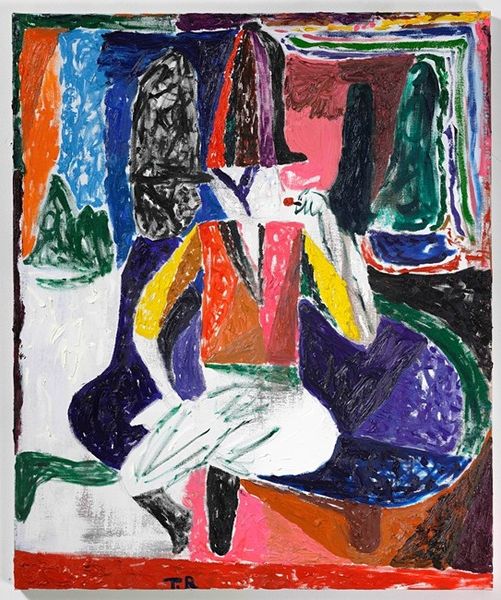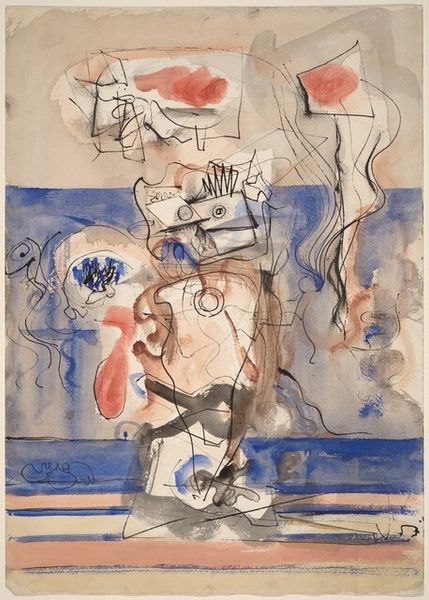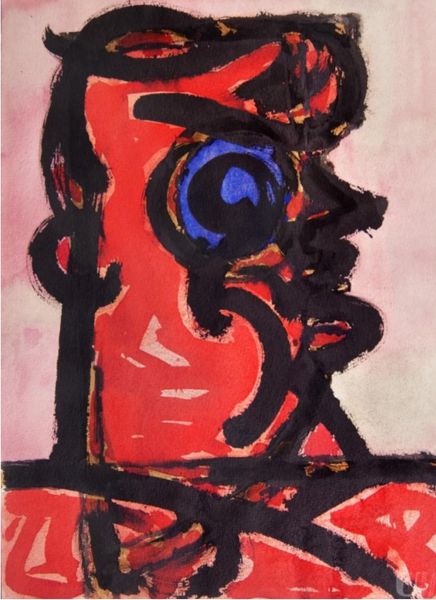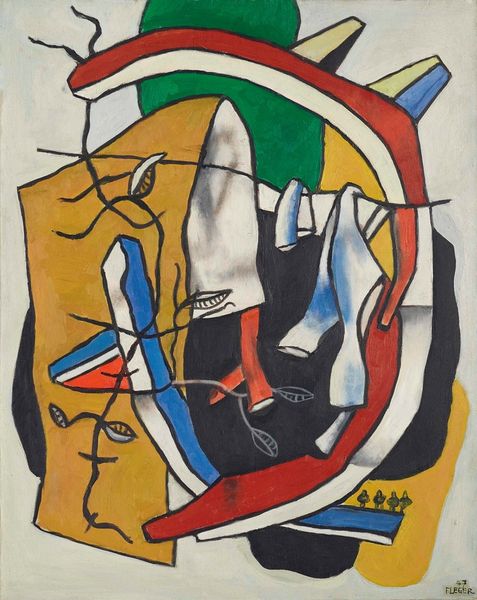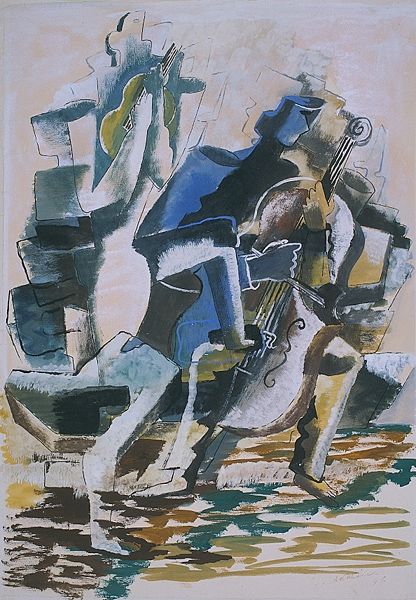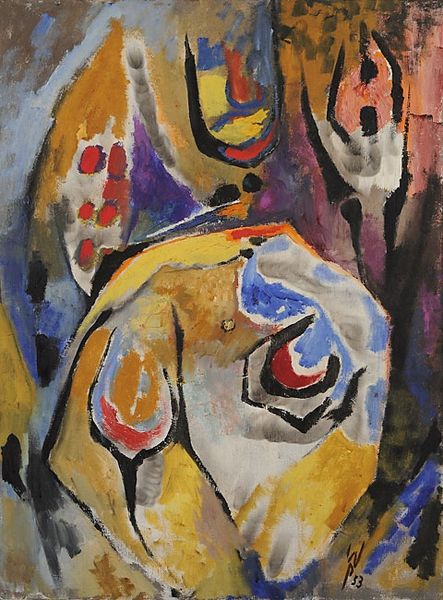
Copyright: Zadkine Research Center (displayed with the permission of Zadkine Research Center)
Editor: Here we have Ossip Zadkine's "Untitled" from 1947, executed in oil and watercolor. The shapes and lines create what appears to me to be a group of figures, and the layering of the colors gives the work a certain dynamic energy. How do you interpret this piece? Curator: Looking at it purely from a Formalist perspective, the interaction of color and line is the most striking element. Note how Zadkine uses color to define form, rather than relying on traditional shading. The blue, for example, acts almost as a planar division, a structural element rather than a representational hue. Editor: So you’re saying the colors are building the figures? Curator: Precisely. And the lines! Observe how the stark, black lines delineate, fracture, and redefine the forms created by the watercolor. The tension between the solidity suggested by the color blocking and the fragmentation caused by the line is critical. It is this push and pull that creates the ‘dynamic energy’ you mentioned. It appears these compositional elements of color and line are crucial to its structure, no? Editor: I see what you mean. It's as if he is creating a conversation between the abstract and the representational using strictly these structural elements of line and color. Curator: Yes, there's a negotiation occurring on the picture plane. We can appreciate the essence of his work without the need of a narrative explanation. Focusing simply on how the paint is applied is rewarding in itself. Editor: I never thought about the planar quality of the blue color itself! I learned that approaching the color's structural value really changes how I view this type of art. Curator: And that rigorous analysis allows one to more fully comprehend not just *this* piece, but the structural underpinnings of much abstract art.
Comments
No comments
Be the first to comment and join the conversation on the ultimate creative platform.
